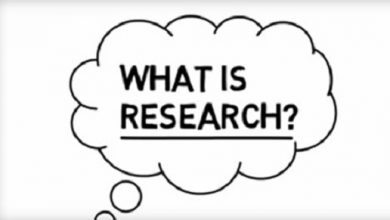What is ISSN/Structure/When to apply/How to get/ISBN
ISSN is the acronym for International Standard Serial Number or, in Portuguese, International Standard Number for Serial Publications.
The ISSN is a unique identifier, which makes the title assigned to serial publications, such as magazines, event proceedings and serial monographs, unique in a given medium or support.
Each serial publication carries only one ISSN code and it is non-transferable. From the moment it is assigned to a serial publication, it must appear in each issue.
One of the advantages of having an identifier for the publication is that it will have an international validation.
All numbers are managed by the International Center of the ISSN and, in Brazil, it is issued by the Brazilian Center of the ISSN (CBISSN) which, in turn, is part of the Brazilian Institute of Information in Science and Technology ( IBICT ).
Structure
This identifier consists of 8 digits, which are separated by a hyphen, forming two groups of 4 digits each.
To present the identifier, you always use the acronym before the numbering.
For example: ISSN 2763-6003 – Refers to the Annals of the UNESC Scientific Journey.
Just above, you learned what an ISSN is, but I believe you still don’t know why it is so important for your publication.
Having an ISSN on the publication guarantees the work’s authority and authenticity, making it internationally recognized.
In addition, this identifier works as a facilitator for the cataloging of periodicals, whether in index bases, libraries or bookstores. Soon, in the midst of so many works, yours will stand out
The publications that are able to receive this identifier are those considered serial, that is, they have periodicity.
This is the case with magazines, for example. After all, we know that when a publisher launches a magazine, it will hardly have a single issue.
The interval between one edition and another, that is, its periodicity, can be weekly, fortnightly, monthly… This will depend on the magazine.
For example, the magazine Pequenas Empresas e Grandes Negócios may have 10, 20 or 30,000 issues – which vary in their content –, however, it will have a single ISSN and this will appear in each of the copies.
Therefore, they are continuous publications and receive this type of numbering:
- Magazines;
- yearbooks;
- newspapers;
- Reports;
- Annals of periodic events;
- Serial monographs – are independent documents that, in addition to having their own titles, are related to each other through a common title;
- Seminars;
- Independent supplements – these are publications outside the body of the journal;
- Some internet sites.
Which publications do not receive the ISSN?
- Sites, commercial sites, personal web pages and internet pages that only contain links to other URLs;
- Publications in PDF whose page (URL) is made available with the PDF extension;
- Folders, posters, hotsites and blogs;
- Printed publications such as: diaries, manuals, folders, posters, books, didactic material, publications with defined periodicity (closed collection), calendars, maps and exhibition catalogues.
In some cases, it is necessary to issue more than one identifier for the publication. See what they are:
Works in different languages
Works published in different languages receive different ISSNs. Unless the work is multilingual (the annals of an event may have texts in more than one language, for example).
Works on different supports
When the work is present in different media, such as physical and electronic, it receives different ISSNs, one for the physical and one for the electronic.
A common example:
A journal is initially launched in the printed version and later chooses to have a digital edition, in these cases, its editors must request an ISSN for the digital version, which will have a new numbering.
In which cases is it not necessary to request a new ISSN?
When there is a change of data in a publication, it is common to ask: is it necessary to request a new ISSN? The answer is no !
In this case, you will only have to request the update of the data.
So please note: it is not necessary to issue a new identifier when changing the following data:
- Publishing company;
- Place of publication;
- Frequency;
- Editorial policy.
First of all, you need to see if your publication meets certain criteria. These criteria will vary according to the type of work support. And soon, I’ll tell you what they are!
After checking the criteria, you must fill in a form and submit it to the ISSN Agency.
Therefore, the process is usually quite thorough and bureaucratic.
Therefore, relying on the expertise of librarians and specialists to handle these procedures is an excellent option to avoid unnecessary stress and make your identifier come out faster.
That’s exactly how it happens at Even3! In other words, you can count on the professionals in our team at Even3 Publications to facilitate obtaining your identifiers.
They analyze every detail of your publication so that everything is in line with international requirements.
But back to the requirements…
for online works
For works available on the internet, it is necessary:
- That the publication’s URL does not mention the edition.
- That the site has the following menus:
- Presentation
- current edition
- Previous editions
- Office hour
- publication standards
- The title of the publication must also be standardized. That is, it must appear consistently everywhere it is cited.
for printed works
Printed works of a scientific nature must:
- Standardize the title in all places of publication (eg cover, title page, file, editorial or presentation, etc.);
- Final doll containing:
- Cover – with publication title and numerical designation (volume and year)
- cover sheet
- Office hour
- 1st page of the Summary
- Editorial or Presentation
- Copy of the 1st page of one of the articles that will appear in the publication.
For the article individually, no.
However, the author of an article published in the proceedings of a scientific event may inform the identifier assigned to the proceedings when filling out the Lattes curriculum .
If you want to specify the article itself, individually, you can generate a DOI, the “Digital Object Identifier”, which is also internationally recognized by academia, if the publication is available on the internet.
Thus, the content of the article can be disseminated and also found by other researchers in a more assertive and targeted way.
Querying ISSN is very simple. Just access the ISSN International Center website.
There, you can search by both the title of the publication and the ISSN number.
- Access: https://portal.issn.org/
- Enter the publication title or ISSN
- Click on the “Search” button
You will be redirected to a screen with the main information of the researched work and you will be able to check, for example:
- How the title of the publication was registered
- Which ISSN Center was responsible for the registration
- The link where the publication is available
- When was the last edit made?
- What media/support is it available on: print or electronic
- The publication identifier number – in case you searched by title
It is also possible:
- Print this information
- Share them on the main social networks
- Copy the information code
Pretty cool, huh? And without many mysteries.
Many people confuse ISBN with ISSN. And, in fact, the acronyms are very similar and both are publication identifiers.
However, the main difference between ISBN and ISSN lies in the fact that, while the ISSN, as we speak here, identifies serial works, the ISBN is the International Standard Book Number, an international system that identifies and individualizes publications according to author, country, publisher. and also according to each edition.
That’s why, Annals of Event , can receive both an ISBN for each of its editions and an ISSN to identify the publication as a whole, that is, the set of serial publications.



